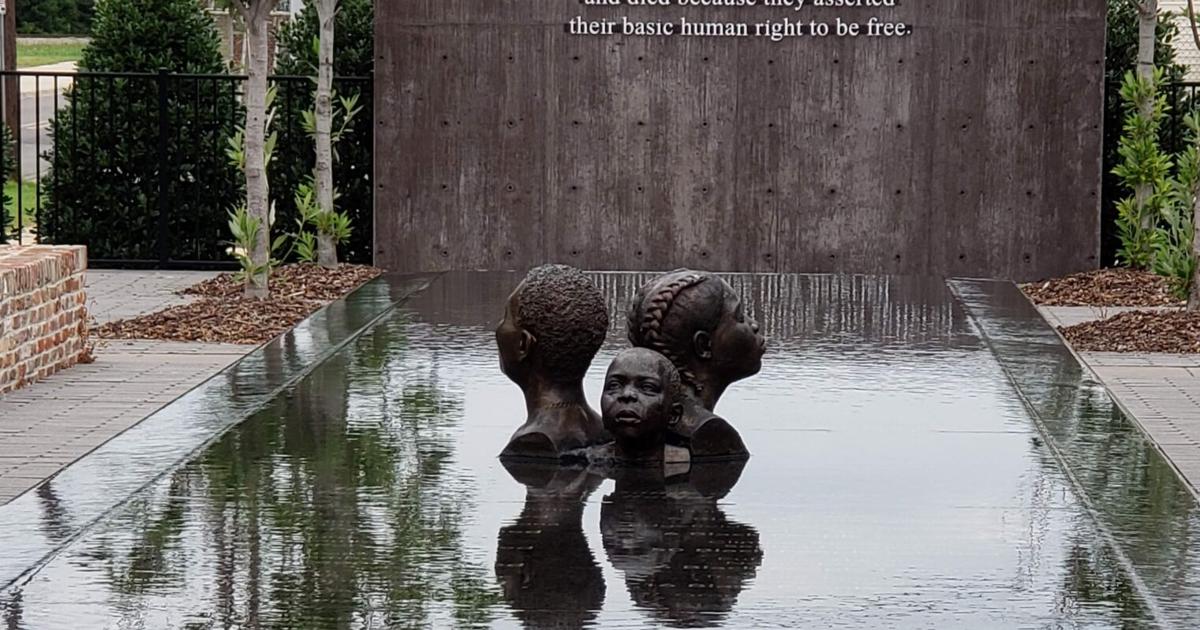
Gifted and Talented coordinators Brenda Rush, Malvern School District, and Laura West, Hot Springs School District, recently completed a seven-day trip exploring museums and historical sites in three states. This trip, entitled African Americans’ Struggle for Equality, was largely supported by a grant from Humanities AR and the National Endowment for the Humanities. The two traveled through Mississippi, Alabama, and Louisiana seeking to learn more about this region’s history from enslavement to civil rights. Three themes emerged over the course of the trip: Black history starts in Africa-not with enslavement, the resistance and resilience of enslaved people in the face of extreme hardship, and the important role of little known foot soldiers in the struggle for equality. These themes were used in the development of lesson plans for fifth and sixth graders in both coordinators’ districts.
Grant recipient Brenda Rush states, “The trip was a fabulous learning experience that will allow me to enhance our students’ and teachers’ understanding of Black history, enslavement, and the civil rights movement. While people say in this age of technology, one can “visit” museums online, that doesn’t account for the impact of the people you meet when visiting museums or for the cumulative effect visiting multiple sites over a few days has in stitching together a more complete understanding of an important historical narrative.” Laura West echoed these sentiments saying, “Placed-based learning is important for a variety of reasons. As the saying goes “you just had to be there.” We WERE there because of the Humanities AR REACH grant, and we and our students are better off because of that.”
Several sites in Mississippi were the first stops on the trip. These included the pivotal sites related to the lynching of Emmitt Till and the trial that followed. In Birmingham, Alabama, tours included Kelly Ingram Park (the site of the Children’s March) and 16th Street Baptist Church. Both highlighted the many contributions of Reverend Fred Shuttlesworth both before and after the Birmingham church bombing. Several other important sites involved in the struggle against segregation were also visited across Birmingham.
The Legacy SItes in Montgomery, Alabama were the next stops. The three sites are provided by the Equal Justice Institute founded by Bryan Stevenson, author of Just Mercy. The Legacy Museum is an incredible experience which details a throughline from enslavement to lynching to mass incarceration. Near the museum is the Peace and Justice Monument which stands as an impactful witness to the history of lynching. The monument includes the names of all currently known victims of lynching displayed by county. The Freedom Sculpture Park had just opened on Juneteenth so they were also able to tour this 17-acre memorial. It is a tribute to not only African Americans’ resistance to enslavement, but also to the indigenous people who first occupied the site. It includes many large scale sculptures. Along the winding walking path, the story of one slave’s multiple attempts to escape to freedom is told in his own words. At the end of the park is the National Monument to Freedom, a 26-foot high wall listing over 100,000 names. The names are the chosen family names from the 1870 census-the first census where formerly enslaved people were able to register as free citizens.
The Rosa Parks Library and Museum was another stop in Montgomery. It is located at the site of the bus stop where Ms. Parks refused to stand, sparking the Montgomery Bus Boycott. In addition to showing Ms. Park’s actions, the museum also highlighted the important role of all the people behind the scenes who helped contribute to making the boycott successful. This was a similar theme at the The National Voting Rights Museum and Institute and the Edmund Petus bridge, both in Selma, Alabama. The museum’s gallery of cast footprints and oral histories of the “foot soldiers” in the fight for civil rights drove home the important role off these courageous unsung heroes.
The focus of the next stops were Africatown and the site of the Clotilda,the last known slave ship to arrive in the United States. A boat tour to the site of the Clotilda wreckage included a moving libation ceremony to honor departed loved ones. The Heritage House in Africatown featured the stories of the survivors of the Clotilda and their creation of Africatown where many of the descendents still make their homes. Ms. Jocelyn Davis, a descendant of Africatown’s founders, spoke eloquently about the need to remember that Black history starts in Africa, not with enslavement. She talked about how so few learn about the amazing contributions that originated in Africa that still positively impact all of us today and how that rich history helped Africatown’s founders survive and thrive.
The final stop was to the Whitney Institute and Museum outside of New Orleans. The Whitney is dedicated to telling the history of plantation life from the sole perspective of enslaved people. It focused unflinchingly on the life and hardships of enslaved people and documented one of the largest slave revolts in history. This included a stark exhibit of the brutal aftermath of the revolt while also emphasizing the resistance and resilience of the enslaved.
Both attendees find themselves frequently returning to the incredible people they met and conversations they had over the seven day trip. The people, places, and resources gathered on the trip were integral to the development of lesson plans to help students become more aware of the world and their place in it, and to show that anyone can make a difference for a cause they believe in. They kept an extensive journal with daily notes filled with impressions, contacts, and follow-up notes that were referred to often in creating the lessons and planning for professional development. It has become an important personal diary of their trip. It was a once-in-a-lifetime opportunity that they hope more teachers are able to experience.



